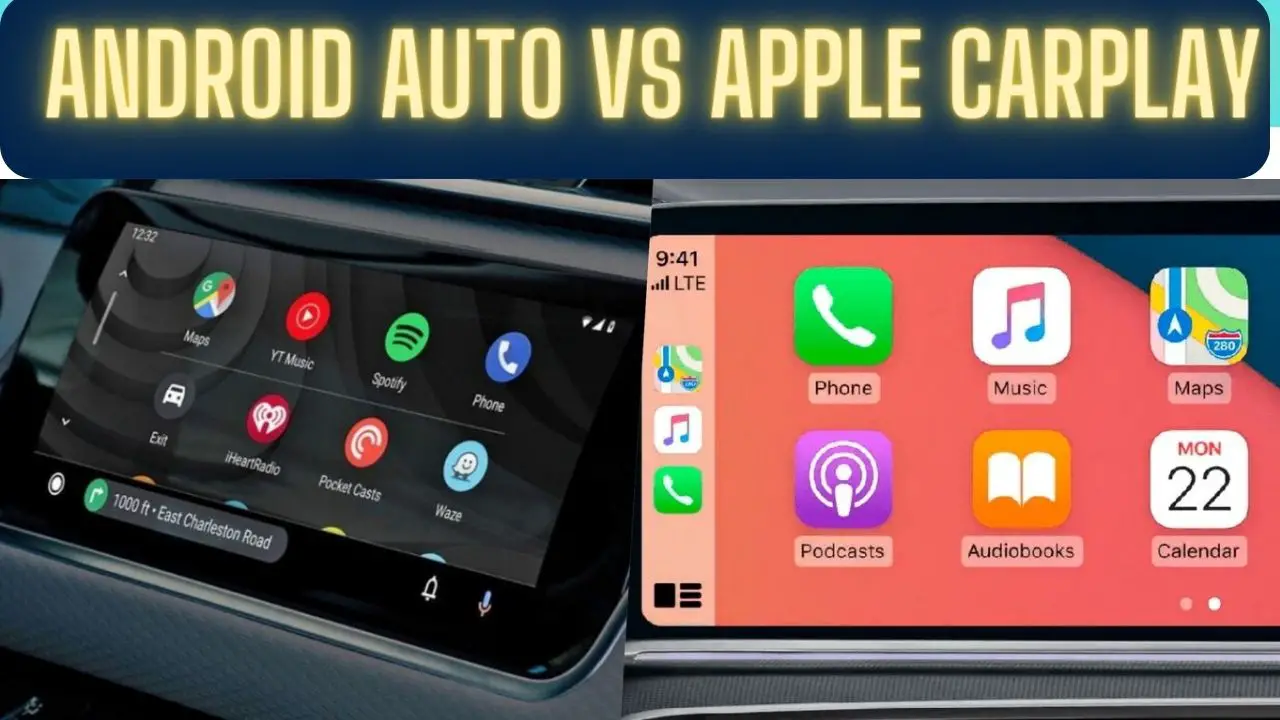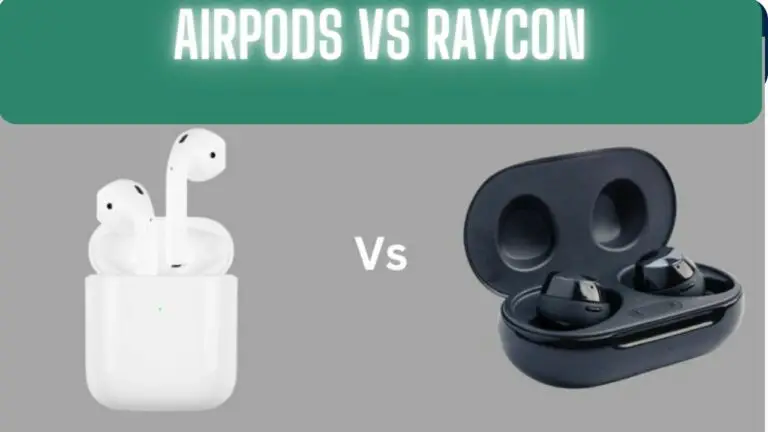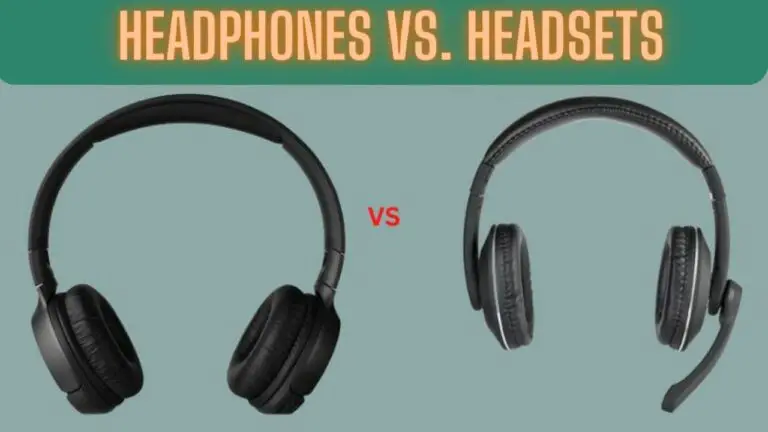Android Auto vs. Apple CarPlay: Enhancing Your In-Car Experience
In the modern world, staying connected is a priority, even while on the road. Thankfully, technology has bridged the gap between our smartphones and our vehicles, offering seamless integration for a safer and more enjoyable driving experience. Two major players in this arena are Android Auto and Apple CarPlay. These innovative platforms have revolutionized how we interact with our cars’ infotainment systems, allowing us to access navigation, music, communication, and more, all while keeping our focus on the road.
In this article, we will embark on a comprehensive comparison between Android Auto and Apple CarPlay. We will explore their features, functionalities, benefits, and compatibility, helping you make an informed decision about which platform best suits your preferences and needs. Whether you’re an Android enthusiast or an Apple aficionado, understanding the strengths and differences of these two systems will undoubtedly enhance your driving experience and keep you connected in the smartest and safest way possible.
Exploring Android Auto: Seamlessly Integrating Your Smartphone with Your Car
Introduction
In the digital age, our smartphones have become indispensable companions, providing information, entertainment, and communication at our fingertips. Android Auto, a technology developed by Google, takes this integration to the next level by seamlessly connecting your Android smartphone with your car’s infotainment system. In this article, we’ll delve into what Android Auto is, its features, benefits, compatible devices, and how it transforms your driving experience.
What is Android Auto?
Android Auto is a platform developed by Google that allows you to interact with your Android smartphone’s apps and services through your car’s infotainment system. It’s designed to provide a safe and convenient way to access navigation, music, messaging, and other essential functions while you’re on the road.
Features and Benefits
- Google Integration: Android Auto seamlessly connects with Google services, including Google Maps for navigation, Google Play Music for music streaming, and Google Assistant for voice commands.
- Voice Control: One of the standout features of Android Auto is voice control powered by Google Assistant. You can initiate calls, send texts, get directions, and even control smart home devices using natural language commands.
- Navigation: Android Auto offers turn-by-turn navigation using Google Maps. It provides real-time traffic updates, alternate routes, and even predicts your destination based on your usage patterns.
- Media and Entertainment: You can access your favorite music apps like Spotify, Pandora, and Google Play Music directly through Android Auto, enabling you to enjoy your preferred tunes while driving.
- Messaging: Android Auto allows you to read and respond to text messages and notifications without taking your eyes off the road. Messages are read aloud, and you can dictate responses.
- Third-Party Apps: Android Auto supports a range of third-party apps, making it customizable to your preferences. Whether you want to check the weather or find nearby restaurants, there’s likely an app for it.
How Does Android Auto Work?
To use Android Auto, you need an Android smartphone running Android 5.0 (Lollipop) or later. Here’s how it works:
- Connection: Connect your smartphone to your car’s infotainment system using a USB cable or wirelessly, depending on your car’s compatibility and features.
- Interface: Once connected, the Android Auto interface appears on your car’s display. It features large icons, easy-to-read text, and intuitive navigation.
- Voice Commands: Use voice commands to interact with Android Auto. Say “Hey Google” or press a button on your steering wheel to activate Google Assistant and give commands.
- Apps and Services: Access apps like navigation, music, messaging, and more through the Android Auto interface. Some apps are adapted for driving, with simplified layouts for safer use on the road.
Compatibility and Availability
Android Auto is available in a wide range of car models from various manufacturers. Some vehicles come with built-in infotainment systems that support Android Auto out of the box. Alternatively, you can also use an aftermarket Android Auto receiver to upgrade your existing car’s infotainment system.
Conclusion
Android Auto transforms your driving experience by seamlessly integrating your smartphone with your car’s infotainment system. It enhances safety by providing hands-free operation through voice commands and an intuitive interface. With access to navigation, music, messaging, and more, Android Auto keeps you connected while keeping your attention on the road ahead. Whether you’re embarking on a road trip or navigating your daily commute, Android Auto ensures you have the convenience and functionality of your smartphone within arm’s reach, all while maintaining a safe driving environment.
Unveiling the Power of Apple CarPlay: Seamlessly Integrating Your iPhone with Your Car
Introduction
In an age where connectivity is paramount, technology continues to redefine the driving experience. Apple CarPlay, an innovation from Apple, brings the power of your iPhone into your vehicle’s dashboard, transforming it into a hub of convenience, entertainment, and navigation. In this article, we’ll dive into what Apple CarPlay is, its features, advantages, compatible devices, and how it revolutionizes the way we interact with our cars.
What is Apple CarPlay?
Apple CarPlay is a groundbreaking technology that allows your iPhone to seamlessly connect with your car’s infotainment system. By mirroring your iPhone’s interface on your car’s display, CarPlay provides an intuitive and distraction-reducing way to access your phone’s features while on the road.
Features and Benefits
- Siri Integration: The hallmark of Apple CarPlay is its seamless integration with Siri, Apple’s virtual assistant. You can send messages, make calls, and even dictate responses using voice commands, minimizing distractions and enhancing safety.
- Navigation: CarPlay uses Apple Maps for navigation, offering real-time traffic updates, turn-by-turn directions, and proactive route suggestions based on your schedule and recent locations.
- Music and Entertainment: Access your favorite music apps like Apple Music, Spotify, and Podcasts through CarPlay. Enjoy your tunes, podcasts, and playlists without taking your eyes off the road.
- Messaging: With CarPlay, you can send, receive, and listen to text messages using Siri. The hands-free messaging feature keeps you connected while prioritizing safety.
- Third-Party Apps: CarPlay supports a growing list of third-party apps, giving you access to a range of services, from weather updates to news apps, all within your car’s infotainment system.
- Phone Integration: Make and receive calls easily through CarPlay, with contacts accessible via voice commands or the touchscreen interface.
How Does Apple CarPlay Work?
Using Apple CarPlay is straightforward, and it operates in the following manner:
- Connection: Connect your iPhone to your car’s infotainment system using a compatible USB cable.
- Interface Mirroring: Once connected, CarPlay mirrors your iPhone’s interface on your car’s display. You’ll see familiar icons and apps on the screen.
- Voice Commands: Utilize Siri by pressing a button on your car’s steering wheel or the CarPlay interface. Speak voice commands to initiate calls, send messages, play music, and more.
- App Access: Access CarPlay-compatible apps through the interface. Some apps are specially designed for use while driving, with larger buttons and simplified layouts for increased safety.
Compatibility and Availability
Apple CarPlay is compatible with iPhones running iOS 7.1 or later. It’s available in a wide range of car models from various manufacturers, ranging from compact cars to luxury vehicles. Some vehicles come equipped with CarPlay-compatible infotainment systems, while others can be upgraded with aftermarket CarPlay receivers.
Conclusion
Apple CarPlay seamlessly merges your iPhone’s capabilities with your car’s infotainment system, enhancing your driving experience by providing safer access to navigation, music, messaging, and more. With its intuitive interface, Siri integration, and support for third-party apps, CarPlay empowers you to stay connected while maintaining focus on the road. Whether you’re commuting, embarking on a road trip, or simply running errands, Apple CarPlay transforms your vehicle into a smart and connected extension of your digital life.
Android Auto vs. Apple CarPlay Comparison
With the increasing integration of technology into our daily lives, our vehicles have not been left behind. Android Auto and Apple CarPlay are two leading platforms that offer seamless connectivity between your smartphone and your car’s infotainment system. These systems provide access to navigation, music, messaging, and more, all while keeping your focus on the road. In this article, we’ll compare Android Auto and Apple CarPlay, exploring their features, benefits, compatibility, and differences to help you make an informed choice for your in-car experience.
Features and Benefits
Android Auto: Android Auto is Google’s platform designed to work with Android smartphones. It offers a range of features, including:
- Google Integration: Android Auto seamlessly connects with Google services such as Google Maps, Google Assistant, and Google Play Music, making navigation and entertainment convenient.
- Voice Control: Utilizing the power of Google Assistant, you can control various functions using voice commands, ensuring a hands-free and safer experience.
- Third-Party Apps: Android Auto supports a variety of third-party apps like Spotify, WhatsApp, and Waze, providing a customizable experience.
Apple CarPlay: Apple CarPlay, developed by Apple, is tailored for iOS devices and offers similar functionalities:
- Siri Integration: With Siri voice control, you can manage tasks like sending texts, making calls, and changing music without taking your hands off the wheel.
- Apple Maps: CarPlay integrates with Apple Maps for navigation, and it offers real-time traffic updates and turn-by-turn directions.
- App Compatibility: CarPlay works with a selection of apps like Apple Music, Messages, and Podcasts, providing seamless entertainment and communication options.
Compatibility and Connectivity
Android Auto: Android Auto is compatible with smartphones running Android 5.0 (Lollipop) or later. You can connect your phone to the car’s infotainment system using a USB cable or wirelessly if your car and phone support the wireless feature.
Apple CarPlay: CarPlay is designed for iPhones running iOS 7.1 or later. It can be connected to the infotainment system through a Lightning cable.
User Interface and Navigation
Android Auto: Android Auto features a simplified user interface with large icons and a familiar layout. Google Maps is a standout navigation option, providing real-time traffic updates and alternate routes.
Apple CarPlay: CarPlay has an intuitive interface that mirrors the iPhone’s design. Apple Maps is the primary navigation app, offering detailed maps and seamless integration with Siri.
Customization and Availability
Android Auto: Android Auto offers a wider range of supported car models due to its more open ecosystem. It also allows for more customization with third-party apps.
Apple CarPlay: CarPlay is available in a growing number of car models, primarily from luxury and mainstream brands. While it has a more controlled ecosystem, it offers a seamless experience for iOS users.
Importance of In-Car Infotainment Systems
The importance of in-car infotainment systems lies in their ability to enhance the driving experience, provide convenience and connectivity, and prioritize safety. Here’s a breakdown of their significance:
- Enhanced Driving Experience:
- In-car infotainment systems offer features such as navigation assistance, real-time traffic updates, and customizable dashboard displays, contributing to a more enjoyable and efficient driving experience.
- Integration with entertainment options like music streaming services and podcasts keeps drivers and passengers entertained during journeys, making long drives more enjoyable.
- Convenience and Connectivity:
- These systems enable hands-free communication, allowing drivers to make calls, send messages, and access other phone features without taking their hands off the wheel.
- Smartphone integration, such as Android Auto and Apple CarPlay, ensures seamless connectivity between the car’s infotainment system and the driver’s smartphone, providing access to apps, contacts, and media content.
- Safety Features:
- Voice-activated controls reduce distractions by allowing drivers to operate various functions using voice commands, minimizing the need to interact with touchscreens or physical controls.
- Integration with navigation systems offers real-time guidance and alerts, helping drivers navigate unfamiliar routes safely and avoid traffic congestion or hazards.
- Personalization and User Experience:
- In-car infotainment systems often offer customizable settings and profiles, allowing drivers to tailor their driving environment to their preferences for comfort and convenience.
- Intuitive user interfaces and adaptive learning features enhance user experience by predicting preferences and simplifying interactions with the system.
- Integration with Smart Home and Wearable Devices:
- Integration with smart home devices enables drivers to control home appliances and systems from their vehicles, enhancing convenience and streamlining daily routines.
- Connectivity with wearable devices, such as smartwatches and fitness trackers, allows for seamless syncing of data and provides additional functionalities like hands-free communication and access to health information.
- Brand Loyalty and Consumer Expectations:
- In-car infotainment systems have become a key differentiating factor for automakers, influencing consumer purchasing decisions and brand loyalty.
- Continuous innovation and updates to infotainment systems are essential for automakers to meet evolving consumer expectations and remain competitive in the market.
In summary, in-car infotainment systems play a crucial role in modern vehicles by offering a combination of entertainment, convenience, connectivity, and safety features that enhance the overall driving experience and meet the demands of today’s tech-savvy consumers.
Android Auto vs. Apple CarPlay FAQS
What is Android Auto?
Android Auto is a technology developed by Google that allows seamless integration of your Android smartphone with your car’s infotainment system, providing access to navigation, music, messaging, and more through a user-friendly interface.
What is Apple CarPlay?
Apple CarPlay is an Apple innovation that connects your iPhone to your car’s infotainment system, offering access to navigation, music, messaging, and other features using Siri voice commands and an intuitive interface.
Are Android Auto and Apple CarPlay free to use?
Yes, both Android Auto and Apple CarPlay are free to use. However, they require compatible hardware in your vehicle and a smartphone running the respective operating systems.
Can I use Android Auto or Apple CarPlay wirelessly?
Yes, both platforms support wireless connectivity, but this feature depends on both your car’s compatibility and the capabilities of your smartphone.
Which smartphones are compatible with Android Auto?
Android Auto is compatible with smartphones running Android 5.0 (Lollipop) or later. However, specific device compatibility can vary, so it’s best to check with the manufacturer.
Which iPhones are compatible with Apple CarPlay?
Apple CarPlay is compatible with iPhones running iOS 7.1 or later. Compatibility generally extends to a wide range of recent iPhone models.
Can I access navigation apps on both platforms?
Yes, both Android Auto and Apple CarPlay offer navigation features. Android Auto integrates with Google Maps, while Apple CarPlay uses Apple Maps for navigation.
Are third-party apps supported on Android Auto and Apple CarPlay?
Yes, both platforms support third-party apps to varying degrees. Android Auto has a more open ecosystem and supports a broader range of third-party apps. Apple CarPlay also supports a selection of third-party apps, including music, messaging, and navigation apps.
Can I use voice commands with both platforms?
Yes, both Android Auto and Apple CarPlay offer voice command functionality. Android Auto uses Google Assistant, while Apple CarPlay integrates with Siri.
How do I connect my phone to my car’s infotainment system using Android Auto or Apple CarPlay?
For Android Auto, connect your Android smartphone to your car’s USB port using a compatible cable. For Apple CarPlay, use a Lightning cable to connect your iPhone to your car’s USB port.
Are Android Auto and Apple CarPlay available in all car models?
Both platforms are available in a growing number of car models from various manufacturers. However, compatibility can vary, so it’s advisable to check with your car manufacturer to ensure your specific model supports the platform.
Can I use Android Auto or Apple CarPlay in rental cars or loaner vehicles?
Some rental cars and loaner vehicles may have Android Auto or Apple CarPlay compatibility, but it’s not guaranteed. It’s recommended to inquire about this feature when renting or using a loaner vehicle.
Can I use Android Auto and Apple CarPlay simultaneously?
No, you cannot use both platforms simultaneously. When one platform is active, the other is typically disabled to prevent conflicts and ensure a smooth experience.
Can I control my smart home devices using Android Auto or Apple CarPlay?
Yes, both platforms offer integration with smart home devices through voice commands. Android Auto uses Google Assistant, while Apple CarPlay uses Siri for such interactions.
Which platform is better for me: Android Auto or Apple CarPlay?
The choice between Android Auto and Apple CarPlay ultimately depends on your smartphone preference, the type of car you have, and your specific needs. Consider factors like device compatibility, supported apps, voice command preferences, and interface design to make an informed decision that best suits your requirements.
Conclusion
Both Android Auto and Apple CarPlay enhance your driving experience by providing safe and convenient ways to access navigation, entertainment, and communication features. Your choice between the two largely depends on your smartphone preference and the car you drive. Whether you’re an Android enthusiast or an Apple aficionado, both platforms are designed to keep you connected while keeping your focus on the road.







